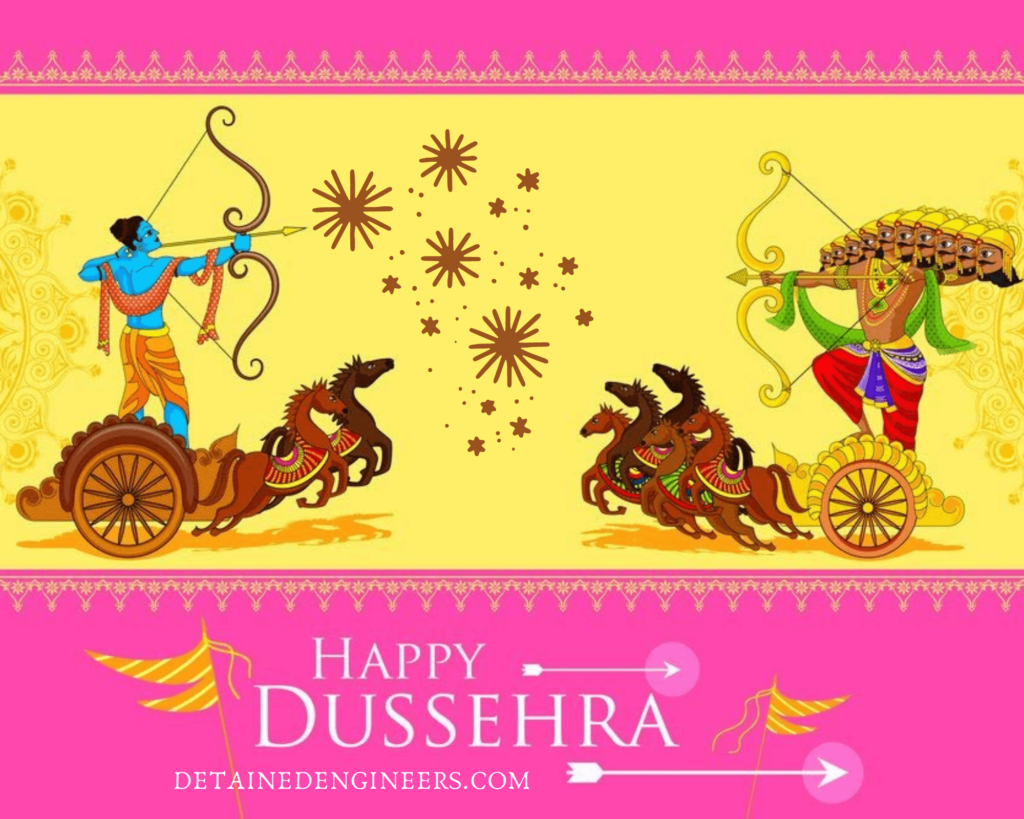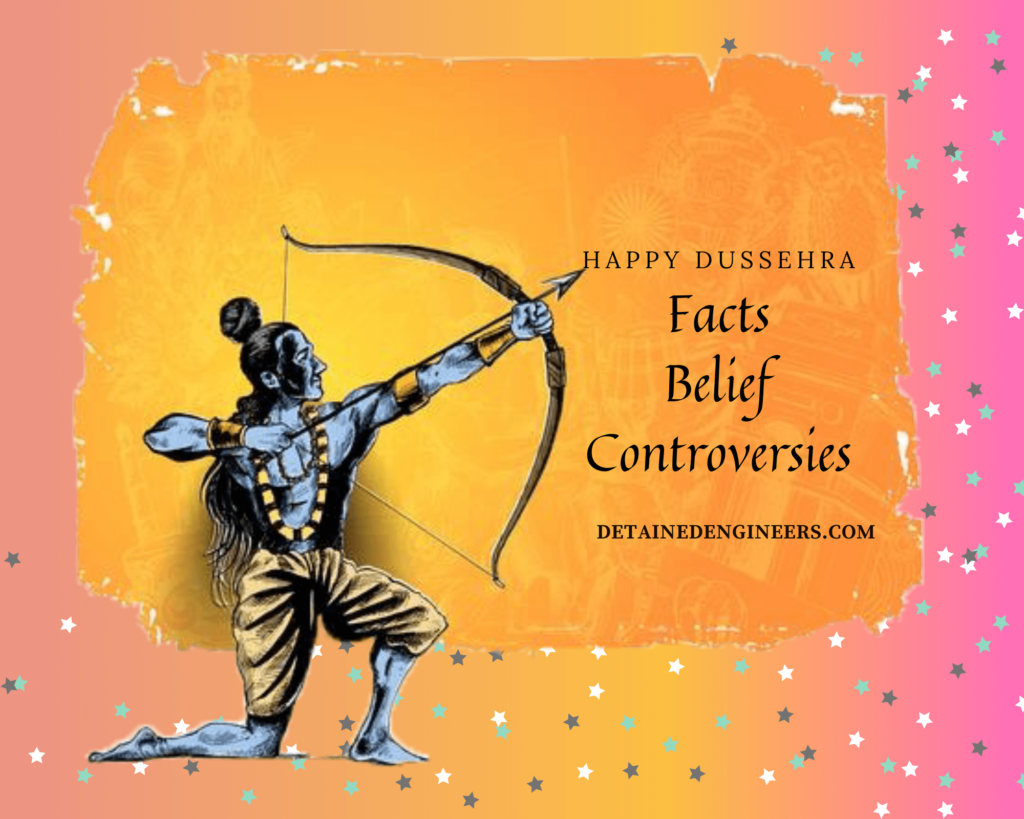How will Indians celebrate another victory of truth over the devil this Dusshera Festival? Now you know!
Dussehra Festival is well-known for the legendry conquest of Ram over Ravan, which is symbolically defined as the triumph of truth over evil. However, most people today are unaware of why this religious event is celebrated under two different names; if you already know, please educate others. Yes, we’re talking about Dashehra, also known as Vijayadashami (another reason to celebrate this day is goddess Durga’s victory over Mahishasura; hence, the day is entirely dedicated to two great victories of truth over wickedness.
However, the first legend, related to Lord Ram explains before and afterlife of the big battle, second story reveals how goddess Durga took the form of Devi Katyayani and killed the humanity-destroyer (Mahisasur). Another important belief expresses that if Lord Ram had not defeated Ravana, the sun would have never risen again, which is what defines the Dassehra as Dash Hara in Sanskrit.
What exactly do people do and don’t do on Dussehra Festival to complete all religious rites?
In reciting Lord Ram as Dussehra:
The day of setting fire to Ravana’s epitome was always a joyous occasion for all Indians, whether they belonged to the Hindu religion or held other beliefs. Thousands of people visit the location to witness the awe-inspiring fireworks display the destruction of three statues including Ravana, Kumbhkaran, and Meghnath, which last at least two to three hours. And the crowd of thousands is setting their foot to the location (specially assigned big ground, Ram Leela Ground) just to see the whole Ram Leela act performed by the actors just before setting fire to the big statues, and the complete performance recites the legendry events, which happened hundreds of thousands of years ago.

Controversy among different believes that people want to change:
However, the complete battle was fought with Ravana, who was considered evil; In some places, Ravana worshiped as a big devotee of Lord Shiva including the 6 states of India: Kangra (Himachal Pradesh), Jodhpur (Rajasthan), Mandsaur (Madhya Pradesh), Gadchiroli (Maharashtra), Mandya and Kolar (Karnataka), and Bisrakh (Uttar Pradesh).
In reciting goddess Durga as Ekadashi or Vijaya Dashmi:
Devotees, on the other hand, worship ‘Maa Durga’ with great love, reverence, and a special road show in her honour. Durga Puja, a popular form of her worship, began in Navratri and finished on the tenth day, Dussehra Festival.
The day culminates in a parade in which the clay sculpture-idols are ceremoniously transported to a river or the seaside for immersion rites, commemorating Durga’s victory over Mahishasura. Durga is said to return to Kailasha, her mythological marital palace, to Shiva and the cosmos in general after the immersion. On the tenth day, people exchange sweets and gifts and pay visits to friends and family. Some populations, such as those in the Varanasi area, visit a Durga temple on Ekadashi, the day after Vijaya dashami.
Sindoor khela’s activities were guided by another key principle. Sindoor khela, also known as Vijaya dashami, is a ceremony in which women apply sindoor (vermillion) to the goddess Durga’s sculpture and to each other.
Controversy among different believes that people want to change:
Animal sacrifice is a common criticism of Nepal’s Dussehra holiday, Dashain. On Change.org, a large number of online petitions have been created demanding government action to stop the mass slaughter. Thousands of animals and birds are ritually murdered, especially on the eighth and ninth days of the Dussehra Festival, in the belief that offering fresh blood will placate Goddess Durga. Goats, buffaloes, lambs, chickens, and ducks are among the birds and animals that have historically been sacrificed. Animal rights advocates have proposed using pumpkins and coconuts instead of birds and animals.

Let’s see some other facts that are totally different from what we know!
- Arvind Trivedi, who played Ravan in the popular 1987 television series Ramayana, died at the age of 82. Even still, he had never imagined how his character role would become such an extraordinary part of his real life, and how the world would always remember his death around Dussehra (the death day of Ravana).
- Ravana was a demon who was also a Brahmin. Ishwashrava, a sage from the Pulastya clan, was his father, while Kaikasi, his mother, was a demon.
- Ravana obtained the blessing of immortality from Lord Brahma after thousands of years of meditation. However, it was later reduced to his life congregating around his navel. Ravana’s brother Vibhishana informed Lord Rama of this information, resulting in Ravana’s death.
- Lord Rama is said to have performed the Chandi Homa Yajna to receive Goddess Durga’s blessings, and it was at this time that Goddess Durga bestowed her blessing and revealed to Lord Rama how to defeat Ravana.
- Dussehra Festival is observed in Ashwin, the Hindu calendar’s tenth month, and signifies the change of seasons because it occurs in October or November.
- Pandavas finish their exile: The Pandavas hid their weapons in the branches of the Shami tree during their exile, and when their exile was over, they returned to reclaim their weapons. Today, Ayudha puja is done to celebrate this incident during Dussehra, which is also known as Astra Puja (weapon worship) in some parts of North India, though with the passage of time, even machines and automobiles have taken their place in weapon worshipping rites.
- Goddess Durga, according to legend, required enormous power, so all other Gods and Goddesses offered theirs to her, and she eventually vanquished the demon Mahishasura, turning Dussehra into Golu in Tamil Nadu.
- Dussehra Festival is regarded as an auspicious day in Kerala for initiating children into the world of education. Youngsters aged three to five are launched into learning by having them write the mantra ‘Om Hari Shree Ganapathaye Namah’ on a tray of rice grains, and after this ritual, those children are given study equipment such as slates and pencils. In Malayalam, the ceremony is known as Ezhuthiniruthu.
- Deekshabhoomi, not to be confused with Dussehra Festival, is a major day in Nagpur not just for Hindus but also for Buddhists, who believe King Ashoka converted to Buddhism on this day and commemorate it as Ashok Dashami.
Read More: 9 Avatars of Goddess Durga

Our Conclusion
The Dussehra Festival, also known as Vijayadashami, reminds us that it is a day of justice. Anything that is wrong or terrible is intended to come to an end one day, and the truth should always be rewarded, and people should never lose faith or hope in the truth.
We can burn the negative traits with us by burning effigies that symbolize the killing of all soul ills, which are represented by Ravana’s ten heads. Matsara represents jealousy, swarth represents selfishness, ahankara represents ego, kama represents lust, moha represents attachment, lobh represents greed, mada represents pride, krodha represents anger, amanavta represents lack of humanity, and anyaya represents injustice, and each of Ravana’s heads represents an evil.
Know More about Best Top 10 Places to Visit in the World
Know the Benefits of Travel: What are the Top 10 benefits of traveling

